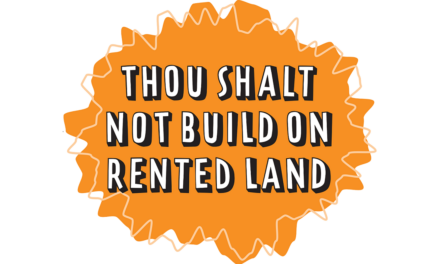In This Issue: Who wouldn’t like free expert help to start and grow your business? Plus, hear from Frank James, who has built a surprising personality-based business. And find out the “best” time to post on Twitter.
full tilt
Get Free Help Like Other Small Business Owners Do
As a content creator drumming up subscribers for newsletters or Twitch, you might not feel like you have much in common with the mom-and-pop shop hawking ice cream to customers down the street. But there are plenty of similarities.
You both sell something. You both look for ways to create and grow a business. And let’s face it, you both are entrepreneurs who probably aren’t flush with cash to spend on a business coach for your burgeoning enterprise.
Thankfully, free and inexpensive resources can help small business owners thrive. And, just like those ice cream shop owners, content entrepreneurs like you can also take advantage of these opportunities.
“The small business owners and entrepreneurs who are the most successful are the ones who are willing to ask for help,” says Katie Gailes, senior director, membership and diversity, equity, inclusion, and belonging, for the National Association of Community College Entrepreneurship.
To help you find the help, we wanted to share these resources that can help you get into the nitty-gritty of the business side of things. Sure, the mentors and business experts you connect with through these resources may have never streamed on Twitch or posted on YouTube. But the mechanics of thinking big picture about business strategy and growth often is the same or similar regardless of the industry.
SCORE, a nonprofit and resource partner of the U.S. Small Business Administration, has a library of templates, calculators, and information about everything from how to create a business plan to the impact of TikTok on small businesses. And it offers free webinars and on-demand courses along with low and no-cost in-person workshops.
But SCORE may be best known for its business mentor program, which connects small business owners with experienced entrepreneurs in their geographic area for one-on-one guidance. More than 11,000 volunteers freely share their expertise to help others succeed.
“You just don’t know what you just don’t know,” says Candice Stennett, vice president of marketing for SCORE. “The last thing that you want as a business owner is to be blindsided by a regulation that you’re not familiar with or anything that might negatively impact your business. That’s the benefit of working with a mentor. These are all people that have been in your shoes, have gone through all of that, and have navigated those challenges and can help you avoid them.”
She explains, “We can help you understand how to monetize your business, how to turn it from a hobby to a business, or at least recommend resources that you might want to turn to if you have legal questions or tax questions.”
Some community college systems have robust programs to help small businesses, says Katie Gailes, former director of entrepreneurship initiatives at Wake Technical Community College in North Carolina.
In some states, community colleges have incubators designed to help small businesses launch. Others might connect local entrepreneurs with students seeking hands-on experience. For example, a content creator might connect with a graphic design student who can create a new logo for free.
Katie says community colleges sometimes are also the home base for another U.S. Small Business Administration program — Small Business Development Centers, which provide counseling and training for small businesses. (The SBA also has Women’s Business Centers throughout the United States. These centers are open to all people regardless of gender identity.)
“Once you raise your head up and start looking, you’ll find that there is so much out there that you can take advantage of,” Katie says.
Of course, not every mentor-mentee relationship will click. And not every single webinar or free resource will provide exactly what you need. But the key, Katie and Candice say, is to keep looking and learning.
– Sarah Lindenfeld Hall
Get more details and links on free small business resources.
Sponsored Content
Get a Fresh Start with the Best Marketing Platform for Creators
Watch your first YouTube video. Read your first blog post. Find your first newsletter. Listen to your first podcast episode. Now, compare it to your most recent piece of content.
It’s night and day, isn’t it? You may have even felt a little (actually, maybe a lot) embarrassed. As embarrassed as you are, that’s also how proud you should be, because that’s how much your content has grown—how much you’ve grown.
If you’re like most creators, your marketing platform reminds you of that first creative effort. It has not kept up. You need a fresh start.
content entrepreneur spotlight
Entrepreneur and Biz: Frank James
Tilt: Personality-type theory (Myers-Briggs, etc.) with a comedic spin
Primary Channel: YouTube (1.02M)
Other Channels: Website, Instagram (51.3K), Facebook (60K)
Time to First Dollar: 1 year
Revenue Streams: YouTube ads, sponsorships, merchandise, affiliate links, and Ko-fi (buy-me-a-coffee tipping service)
Our Favorite Actionable Advice:
- Adapt your storytelling, not your tilt: Having a seemingly tiny niche (personality types) would likely attract a tiny audience, but Frank James found a technique (comedy) to draw in over 1M.
- Create a lot of content and turn it out consistently: When marketing your content, you better have a solid base so audiences can see what you’re all about and return regularly to consume more of it.
- Love what you do, not just the topic: Communicating with audiences as an entertainer or educator is the job of a content entrepreneur. To succeed, you better be passionate about doing that.
– Leo Bonacci
Get the full story and watch the video that led to huge success for Frank James.
things to know
Money
-
Pennies for a thousand: New research identifies TikTok pays creators between two and 4 cents for every 1K views. That’s just $20 to $40 for 1M views. (MoneyTransfers.com)
Tilt Take: TikTok’s short game isn’t just for videos; it’s for creator earnings, too. -
Irresistible offer: Always remind free subscribers what they’re missing that paid subscribers get. For example, include headlines from your paid newsletter in your free version. (Josh Spector)
Tilt Take: Always have a plan on how to convert your audience to your next tier effectively.
Audiences
-
TV stand: More YouTube viewers are watching through connected TV devices – 36.4% of watch time in the last quarter vs. 34.4% in 2021 and 30.5% in 2020, according to eMarketer. (tubefilter)
Tilt Take: Watch the progress of YouTube’s strategy to compete with broadcast and cable networks to think about how your audience views your videos. -
Morning time: Sprout Social’s client data shows 9 a.m. (US CST) Monday, Tuesday, Wednesday, Friday, and Saturday is the best time to post to Twitter. On Facebook, it’s 3 a.m. Monday through Friday. (Social Media Today)
Tilt Take: Good thing you can schedule social. Who wants to wake up at 3 a.m.? (And why is Thursday not a good day for Twitter?)
Tech and Tools
-
Flock together: Co-tweeting is now an option for some users. If available, you write a tweet, invite the other person to join you, and then publish it on both timelines. Invites will show up in the notifications tab or DMs. (Mashable; h/t Matt Navarra)
Tilt Take: This option is especially intriguing for creators who do brand deals. -
SEO know-how: Google’s created one-stop shopping to see its confirmed updates. (Google; tl;drMarketing)
Tilt Take: Helpful resource if you’re trying to figure out the Google mindset on search.
And Finally
-
Any other name: Reddit seems to hope its euphemisms for NFTs will win over its audience. They call them “blockchain-backed collectible avatars” and only accept traditional (i.e., non-crypto) currency. (Casey Newton)
Tilt Take: NFT lingo isn’t the best for mainstream audiences, but we don’t think “blockchain-backed collectible avatars” is any better. -
Erratic troubles: Delivering your emails to subscribers’ inboxes can hit a snag if your broadcast activity is erratic. You risk a lower sender score, IP rejection, or a poor IP reputation when you don’t maintain a regular schedule. (Readers Digest UK)
Tilt Take: Consistently delivering your content to your audience has many benefits.
the business of content
- The best content you create today might actually be updating your old, out-of-date content.
- Joe and Robert talk about what marketers and creators need to do now to prepare for the erasing to come.
- Is being a small business owner really worth the challenges?
- Think about these tips as you speak to communicate better in business.
- Summer intern advice for those who employ them.
the tilt team
Your team for this issue: Joe Pulizzi, Ann Gynn, Laura Kozak, Marc Maxhimer, and Dave Anthony, with an assist from Sarah Lindenfeld Hall and Leo Bonacci.
Get more of the Full Tilt stories on TheTilt.com.
Know a content creator who’s going full tilt? DM us or email [email protected]
Want to advertise on The Tilt? Go here.
Or email us at [email protected]
Interested in the tools we use? Check out our Tilt Tech Stack here.
Was this email forwarded to you? Get your own sub here.
Copyright ©2022 Tilt Media LLC All rights reserved.
Update your preferences | Unsubscribe | 17040 Amber Drive, Cleveland, OH 44111







